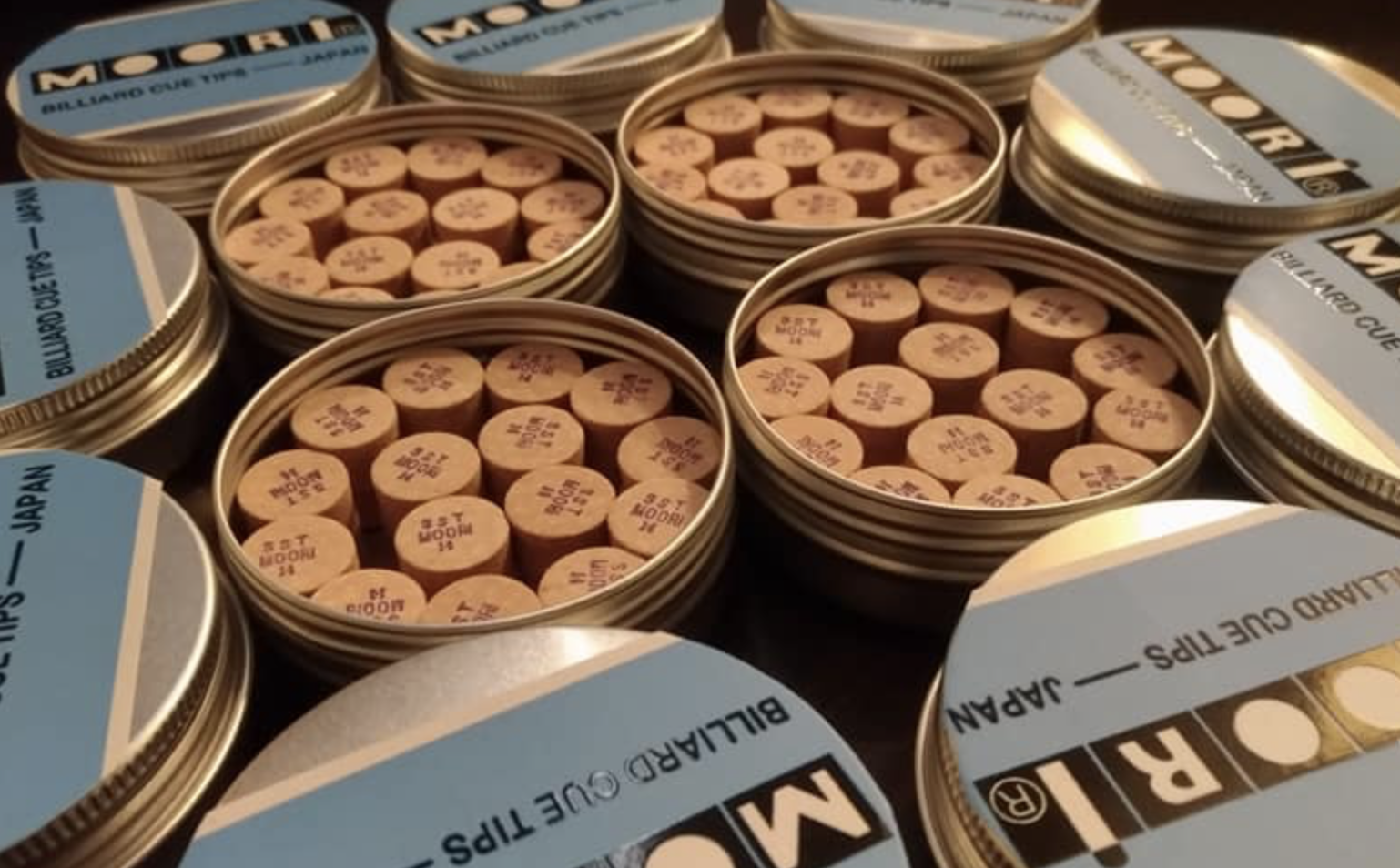With the quality of the elasticity and density of the fibers.
In this article, I will talk about the relationship between “play”, “win rate”, “pressure” and “hardness” of the tip in billiards. I think tip’s words “hard” and “soft” often include stereotypes and preconceptions, not just hardness. It’s like, “A hard tip is harder to catch the ball,” or “A soft tip is harder to slip. For example, there are those that have no elasticity at all, like iron, and those that have a slight softness, like wood. Some are “soft,” others are airy and fluffy, while others are more like necha rice cakes.
Also, even with the same necha, there is a complete difference in the feel between a puffy softness and a moist softness. So I think it’s better to express the hardness of the tip by adding some sort of essence to it. It’s not just “I like hard (or soft) tips”, but “hard but bites with a squeak”, “soft but doesn’t lose its shape”, “hard but doesn’t make a metallic sound”, “soft but doesn’t crush”. As a tip maker, we don’t just set the hardness of the tip, we make it.
We take into account the quality of the elasticity and density of the fibers to create a good total balance. That’s why we’ve changed the wording of the tip type from “hard (H)” and “soft (S)” to “quick (Q)” and “slow (S)” response speeds – the time it takes for the tip to release after it catches the ball (there’s also a medium (M)). Hardware and software is something that many people can understand even if they don’t dare to say it. So I omitted that and added an element of response speed to the hardness and called it “a tip with a hard and quick (or soft and slow) character.
Just change the tip to something a little stiffer.
The story so far is not limited to tips, where you can draw very easily. On cue, for example, the stiffness of the shaft depends on the tip. Also, even if the cue or tip is stiff, just changing the way you hold it will make it feel different. Even with the same cue, if you grip it lightly, it will feel more and more stiff, and if you grip it tightly, it will feel a little milder. So I think it’s difficult to describe hardness and so on simply by using the words “hard” or “soft”, even if it’s a cue.
When choosing a cue that matches you, you should not only look at the design, but also think about your physique, stroke and playing style as a whole. For example, if you have weak arm strength and a small stroke, you may need to increase your cue speed to make up for the lack of power. Therefore, when choosing a cue, I think it’s a good idea to choose a cue with a tip or weight that is easy to increase the cue speed. In addition, professional players pay attention to the position of the center of gravity of the cue in great detail.
Therefore, knowing the performance of a cue used by a professional player of a similar build to your own can be an indicator of how to choose a cue. When you choose a cue based on not only its design but also its performance, you will be able to see what kind of hardness and characteristics of the tip should be installed on the cue. The reason we make three different types of tips is so that you can choose the one that suits you best at that stage. Unlike in the past, it’s easier to buy custom cues nowadays.
So, in the future, I’ll be able to tailor a cue to fit my needs, and then choose a tip to match. When we have that path, I think the relationship between the play and the tools will also be a more natural match. Why don’t you go a little deeper than your vague preference and think about what kind of equipment you need to improve your accuracy? It’s all about “picking the right tools” to make a good play.
Of course, to play well, you have to train as well. But the truth is that you can sometimes overcome a shot you’re not good at by just changing your tools. For example, if you say, “I can push the ball with a gusto, but the pull ball is blurry,” you’re often using a soft tip. Of course, even with a soft tip, if you cue well with a long stroke, you can pull cleanly (put some backspin on the ball and bring it back to the front). But if you change the tip to a slightly stiffer one, it becomes much easier to pull with just that.
Statistically, a slightly firmer tip.
The one who uses it has a better chance of winning.
It has something to do with match winning percentage and the hardness of the tip.
In terms of the Japanese three-cushion scene, statistically speaking, people who use slightly stiffer tips have a better chance of winning than those who use softer tips.
Also, globally, I don’t hear a lot of stories about players who are going to be champions using Fuka Fuka’s tip.
The reason for this is the table conditions.
Table conditions in the early stages of the tournament were dry and light, but in those conditions, the softer tips felt more secure.
This is where the ball slips away as soon as the shot is taken, and the softer tip is for a squeak-and-call motion.
However, the table conditions became wet and heavy as the tournament progressed.
When that happens, a soft tip can make the mistake of pulling the ball too far when it’s hinged.
It was extra when I was nervous and had a slightly weaker stroke.
In other words, the soft tips are pleasant to use in the first morning when the conditions are smooth, dry and light, but they require difficult maneuvers as you win.
On the other hand, the firmer tips will be better in the high points of the tournament, when the conditions are wet and heavy.
So statistically, people who are using slightly harder tips have a better chance of winning in tournaments.
Mouri himself used to be a young player who liked soft tips.
But as I’ve gained experience, I’ve started to tip thinner and slightly harder before the game.
I’ve found that tips that are too thick or too soft can make you anxious in a real match, especially in a tense situation.
So, although we know this by heart, there is an aspect of the tool that can affect the outcome to that extent.
By the slightest change in tools.
It makes a difference in your play.
Sometimes the hardness of the tip can help you overcome pressure.
If you are using a tip that is not suitable for you, you may be unknowingly making ball control more difficult.
Would it be better to say that they didn’t greet the ball with a transparent feeling?
The uncomfortable feeling of the tip can make you feel uncomfortable while playing, so you may be afraid of shots that you shouldn’t be afraid of.
A professional player can imagine from the feel of the tool how difficult it is to hit a shot with this cue, or how it might be to hit that kind of shot.
It takes years for amateurs to reach that level, but as I said, a small change in equipment can make a difference in your play.
Keep this in mind at all times, and when you watch an advanced player play, try to see not only the difference in the level of play and the amount of training, but also the difference in the equipment itself between you and that person.
I think it will change the way you look at tools, and most importantly, it will make billiards more interesting.




